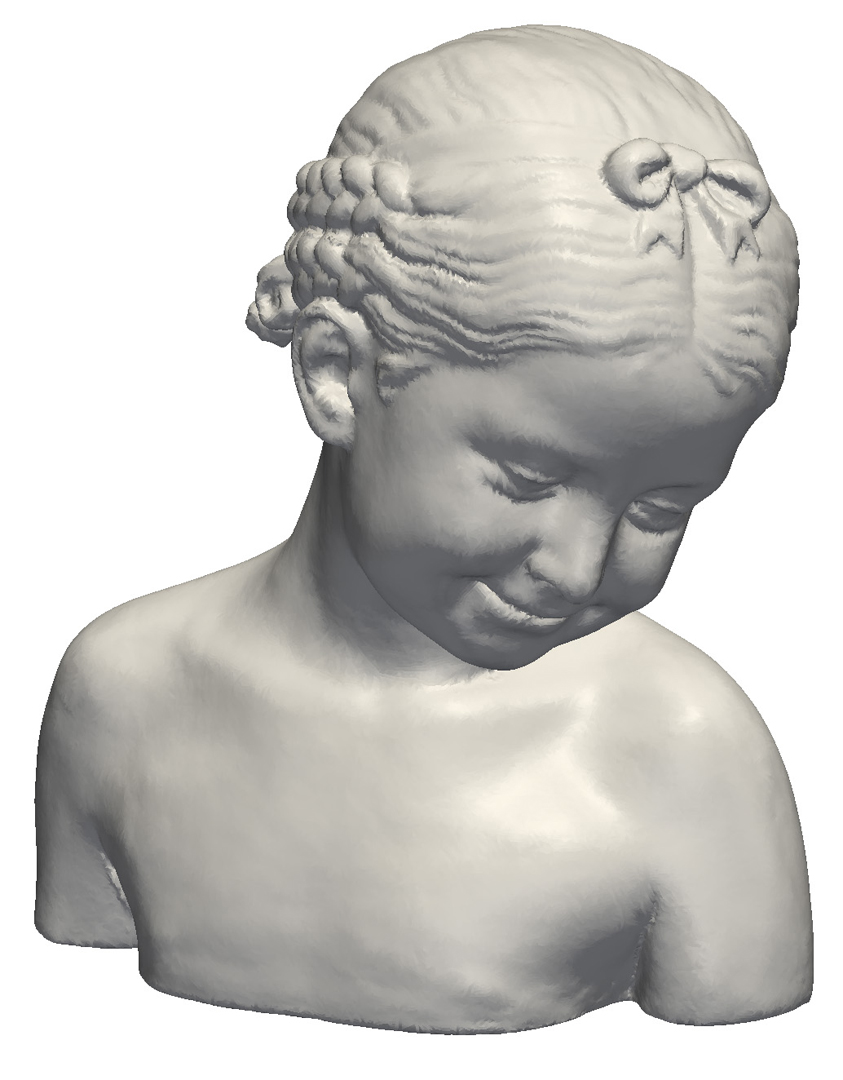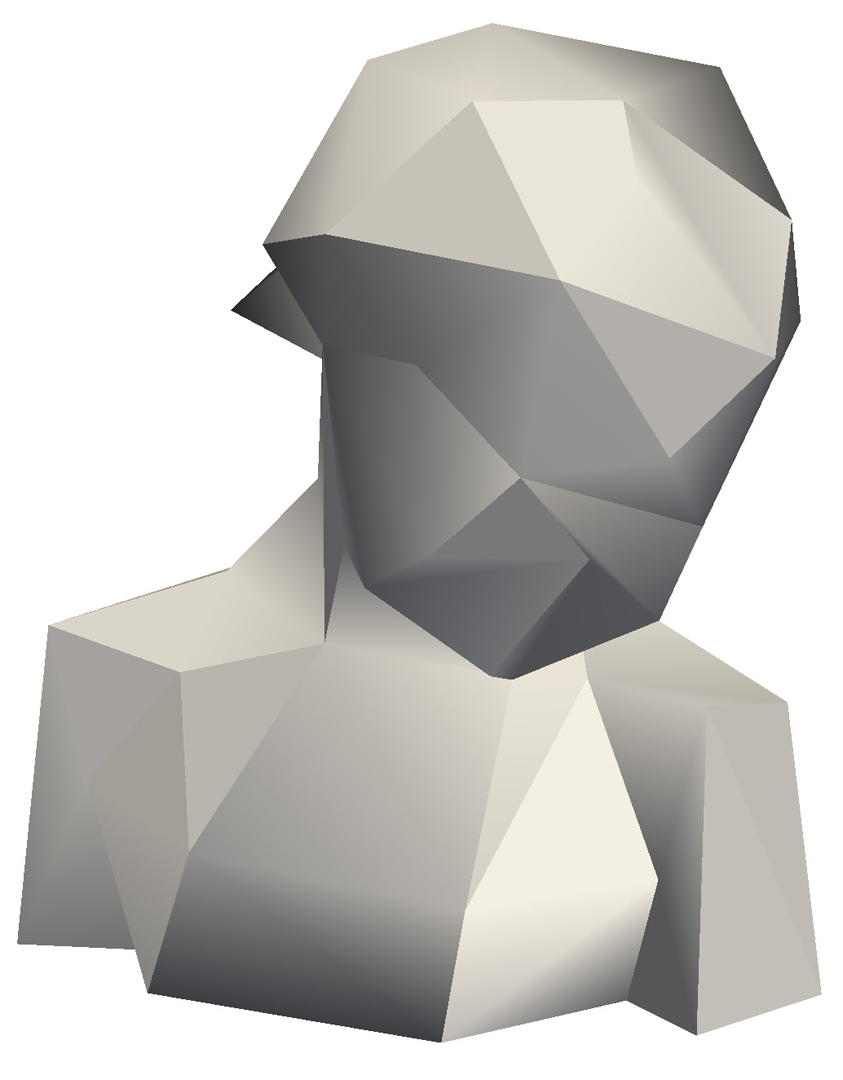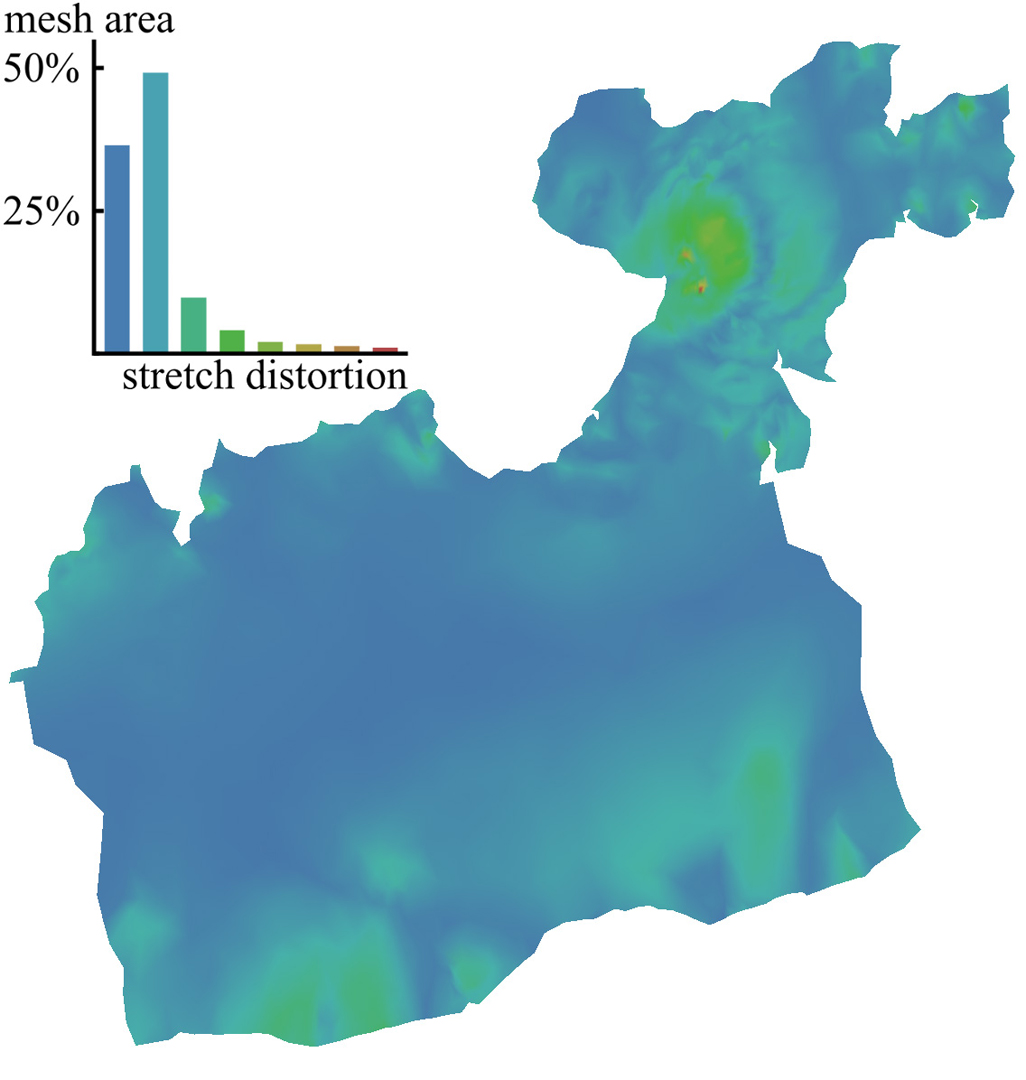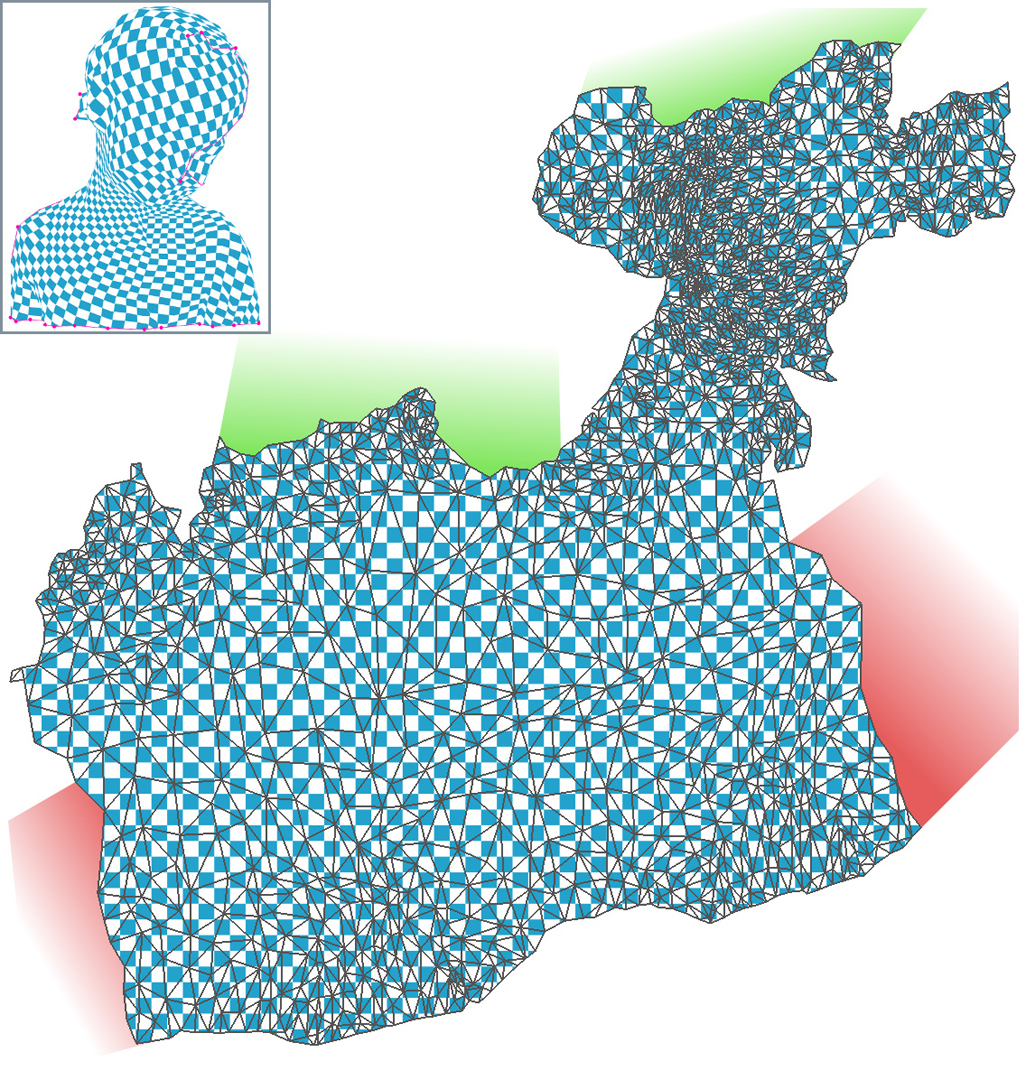“Base mesh construction using global parametrization” by Ganacim, Maximo and Velho
Conference:
Type(s):
Title:
- Base mesh construction using global parametrization
Presenter(s)/Author(s):
Abstract:
Base mesh construction from a dense-polygon mesh is often used to reduce the complexity of geometry processing problems. In the base or control mesh, each face corresponds to a region on the original surface and is used to encode its geometry. This encoding can involve a different representation of the surface, e.g. using displacement field and subdivision surfaces [Lee et al. 2000], or can be a more direct representation, e.g. through charts [Sander et al. 2003]. In the former example, the control mesh is constructed using edge-collapse simplification, and in the latter by an iterative seed-placement and chart-growth optimization process. Although both methods strive to optimize this construction, the first implies a sequence of local operations, lacking a global strategy, and the second iterates over greedy choices, which may not converge to a global solution.
References:
1. Lee, A., Moreton, H., and Hoppe, H. 2000. Displaced Subdivision Surfaces. In Proceedings of ACM SIGGRAPH ’00, 85–94.
2. Sander, P. V., Wood, Z. J., Gortler, S. J., Snyder, J., and Hoppe, H. 2003. Multi-Chart Geometry Images. In Proceedings of Eurographics/ACM SIGGRAPH SGP ’03, 146–155.
Additional Images:








